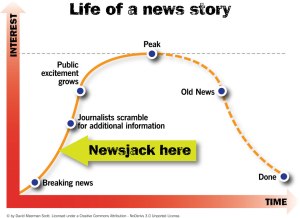Author Archives: Team @ The PR Workshop
About the PR workshop…..
Sorry for this bit of self-promoting rant..
The PR Workshop provides comprehensive communication content and solutions to growing organizations that yearn for an informed communications advisory! We are a full service public relations firm with clients distributed across the entire spectrum of the industry. Our home location is Chennai, yet, in this wired world, we can seamlessly deliver image solutions to clients across the globe!
Our goal is to manage PR and in turn, the IMAGE of our clientele, leaving them to focus on their core business. We handle anything to do with the communication plan, be it external or internal – media relations included!
When you become our client, we offer you the following services–
- Continuously work with you on your PR/ Corporate Communication plans
- Manage your communication across target audience/media
- Manage RFIs swiftly and accurately
- Image/Reputation management
- Crisis Communication
We help optimize your communication strategies, increase visibility and effectively manage your reputation. Our services cover media relations, strategy and message development; crisis and issues management; social media management and marketing; media training; content development; and more. Simply said, associate with us and:
- Make the right noise about your brand, company
- Constantly disseminate your mission values to the target media
- Create optimal & appropriate visibility in appropriate media platforms
- press relations and media management
- Media positioning and showcasing of your organization
The PR Workshop strongly believes in holistic solutions for external communication of our clients. The communications solutions we offer would encompass appropriate strategy, tactics and execution – bearing in mind your communication goals of our esteemed client organization.
For more information, feel free to write to murali@prhq.in
Also please do see http://www.prhq.in
Of terror, color and communication!
Yet again, there has been a terror strike in the capital city of the Indian state of Andhra Pradesh – Hyderabad.
As always, the ruling government and its leaders have in their ‘usual’ language condemned the act of terror with the usual vocabulary meant for such occasions – a dastardly act, an act of terror, an attack on the Indian democracy etc.
For those who observe such incidents – now happening with an alarming regularity in India – it’s a sad and tragic sense of deja vu, that comes to haunt this country and its people again, and always.
Terrorism by the extremist elements who are against resolution of their grievances through democratic ways and means, is no less a grave problem that faces a country like India, given its history, and geo-political fit.
But more than that, what may continue to inspire such elements in continuing their thirst for blood and such inhuman acts is not just the actions by those in power.
It is equally inspired (with hesitation, one could use the world emboldened) by the confusion in communication or communication strategy by those who hold power.
The moment the unequivocal message from the ruling class is – we will not tolerate (the words in their truest sense) such acts, by whomsoever doing this – there will be a strong deterrent by the terror outfits – making them think that their ‘jehadi’ acts will not work.
Contrary to that, the communication strategy by the government is being carefully ambiguous – more keen to assuage the feeling of some sections of the society where some of these elements may belong to.
Add to that, the new tendency of the rulers to use colors to depict the kind of terror – red, blue, green and what not. Lack of assertiveness and conviction in articulating – with the message “irrespective of who, belonging to where” attack people in the name of religion, had clearly given more courage to such attackers, their supporters, the communities in question, and whoever give those people safe haven.
Terrorism breeds in a climate where the right words – not just verbal condemnation and routine drab statements – are used by the government and state/central administration.
Add to this the coloring attempts based on vote bank convenience – if your terror is of a certain color, then there are a hundred other factors to be seen before the right punishment is meted out… and you keep making a perennial cocktail in which innocents lose life, and the perpetrators continue to do so at will.
In handling terrorism, and the terror elements, the choice of words matter as much as the deeds, by those holding office.
Here is a simple yet powerful example – post 9/11, President Bush said “We will make no distinction between the terrorists who committed these acts and those who harbor them.. we will hunt them down, in whichever corner of the world they may be”.
In contrast, immediately after the attacks yesterday evening in Hyderabad, India, Dr Singh Indian PM said “”The guilty will not go unpunished.”
Its so much different from “the guilty, whomsoever, will be punished quickly.” What plays in the choice of words is not the conviction to act, but what fallout usage of tough words will cause.
To take terror and its roots head on, the country and its administration first need to communicate with power and conviction.
The right actions by all concerned will be a natural fall-out.
Ambiguity in whether to really deal with such acts (color depending) will be a good recipe for empowering rogue elements.
Related articles
- Hyderabad Bomb Blasts: Two Deadly Explosions Leave Terror Cloud over India (world.time.com)
- India police say were warned about Hyderabad bomb threat (dailystar.com.lb)
- US Stands With India in Combating Terrorism (indiatimes.com)
- Terror strikes Hyderabad again (thehindu.com)
Useful post on #socialmedia monitoring tools by Steve.
The List
From time to time, every digital marketer needs a quick and easy social monitoring tool to use for various projects, and if it is free that is all the better. While not an exhaustive list, it is a strong collection of the most popular free tools available. I hope you find what you need here.
Click to Tweet: ★ Top 20 Free Social Media Monitoring Tools ★
This list is based on over 400 votes collected at The Steveology Blog from June 2012 to the end of the year. Depending on your needs, you will likely require to use more than just one tool to monitor your brand on the social web since no one tool will be perfect.
Section Criteria
I selected the tools for the poll this list is based if they were completely free, or having a permanent free option that I felt actually provided value…
View original post 197 more words










